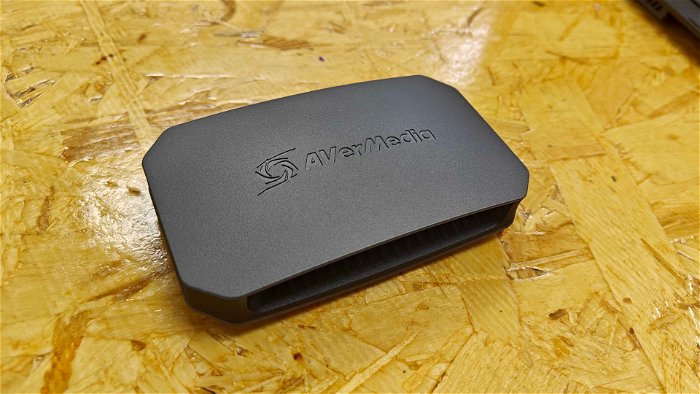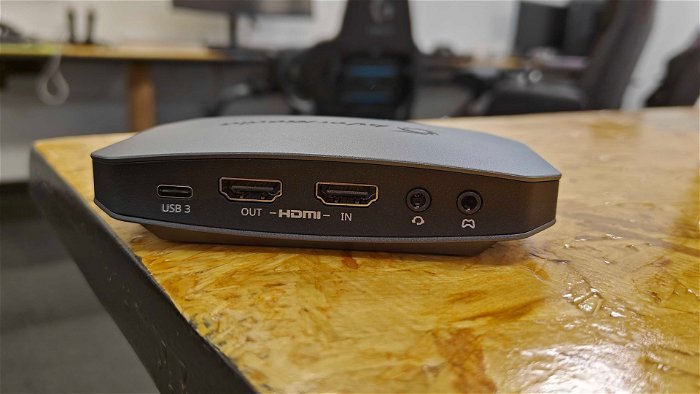The AVerMedia Live Gamer ULTRA 2.1 capture card is the latest device from AVerMedia aimed at high fps console and PC gamers. With support for 4K144 passthrough and 4K60 HDR capture, it is designed to unlock the full potential of HDMI 2.1-compatible gaming hardware. With a wealth of options, great video quality, and an incredibly simple setup process, it is hard not to enjoy what the AVerMedia Live Gamer ULTRA 2.1 brings to the table.
At $299 MSRP, the Live Gamer ULTRA 2.1 is priced similarly to competitors like the Elgato 4K60 S+. Given the HDMI 2.1 capabilities, it targets a premium market of early adopters with the latest GPUs, consoles, and displays and looks to push the limits of what capture is capable of. On paper, it is an ideal choice for content creators who want to step up their game on quality or fluidity of footage, so provided it delivers on the features, it could be a major upgrade for gaming enthusiasts.

Looking at the device, the AVerMedia Live Gamer ULTRA 2.1 Capture Card sports a compact yet premium design measuring just 4.7 x 2.8 x 1.1 inches. It has an eye-catching rainbow neon light strip that runs along the top, adding style to any gaming setup. Included in the box are the capture card itself, an HDMI 2.1 cable, a USB-C to USB-C cable for connection to your PC, and a 4-pole 3.5mm audio cable. The included cables are high quality and make setup simple.
“Looking at the device, the AVerMedia Live Gamer ULTRA 2.1 Capture Card sports a compact yet premium design measuring just 4.7 x 2.8 x 1.1 inches.”
Installation involves connecting the HDMI passthrough between your gaming device and display and then plugging the USB-C cable into your streaming PC. The drivers automatically install when first connecting the capture card. From there, you can clone your gameplay display to stream or record using your recording software of choice. For reference, while testing, we used the latest version of OBS, and it worked flawlessly. There are other software options, such as Streamlabs and XSplit, and all should work as expected, provided the support the features this card offers.
The AVerMedia Gaming Utility app lets you control RGB lighting, mic and audio volumes and update the firmware. Between the two apps, all aspects of the capture card can be tweaked and customized as needed. Unlike some of their other hardware, though, the AVerMedia Live Gamer ULTRA 2.1 Capture Card has only a limited set of options, but what it does offer is useful, be it for streaming or just capturing the latest gameplay for YouTube or other content creator needs.

Physically setting up the Live Gamer ULTRA 2.1 is simple, thanks to the plug-and-play design. Just be mindful of positioning the card and cables for a clean, organized look. The compact footprint takes up minimal space. We have tested the AVerMedia Live Gamer ULTRA 2.1 with a range of monitors and hardware, and as of yet, we have not found any issues with the capture or passthrough. That being said, with any hardware like this, there is always a chance there may be incompatibilities.
But this brings us to the question of what makes HDMI 2.1 so exciting and why it is such a game-changer for a capture card like this. With the latest generation of gaming consoles like the PS5 and Xbox Series X, HDMI 2.1 has become an increasingly crucial specification for gamers who want to take full advantage of what these systems can do. The key improvements HDMI 2.1 brings revolve around higher resolutions, refresh rates, and bandwidth.
For starters, HDMI 2.1 supports 4K resolution at a 120Hz refresh rate. This allows much smoother gameplay and responsiveness compared to being limited to 60Hz at 4K. Fast-paced competitive games really benefit from the extra frames. HDMI 2.1 also provides enough bandwidth to enable 4K at 144Hz, 8K at 60Hz, and even 8K resolutions in the future. Beyond resolution and refresh rate, HDMI 2.1 enables key next-gen gaming features like variable refresh rate (VRR). VRR allows the display’s refresh rate to dynamically sync with the frame rate output of the console to prevent screen tearing.

For capture cards to keep up with HDMI 2.1-enabled devices, they need to support these higher resolutions and frame rates fully. Cards limited to HDMI 2.0b can’t capture beyond 4K 60Hz, which leaves a lot of performance on the table. The AVerMedia Live Gamer ULTRA 2.1 Capture Card, bringing HDMI 2.1 support to this device, helps future-proof it for the capabilities of the latest consoles. Gamers can record and stream new games at the highest visual quality and performance the PS5, Xbox Series X, or a top-end PC can deliver.
“The AVerMedia Live Gamer ULTRA 2.1 Capture Card, bringing HDMI 2.1 support to this device, helps future-proof it for the capabilities of the latest consoles.”
With features out of the way, it was time to actually see what the AVerMedia Live Gamer ULTRA 2.1 could do. When it came time to really put the Live Gamer ULTRA 2.1 through its paces, I was eager to benchmark its capabilities and see if it lived up to AVerMedia’s claims. Now, for context, I’m running a pretty beefy setup with an NVIDIA RTX 4080 and Intel i9 13900K, which allows me to game comfortably at 4K 60fps or 1440p 120+ fps and gives plenty of flexibility for recording and editing high-quality video.
First, I tested passthrough performance by playing some graphically demanding games like Cyberpunk 2077, Doom Eternal, and Lords of the Fallen at 4K 60fps, all running on the PS5. Impressively, the ULTRA 2.1 was able to pass through the 4K signal to my monitor without any hitches, frame drops or visual degradation. Everything looked crisp and played super smooth, so no complaints there, with the game looking as if there were no box in the chain of connection.

Next, I really wanted to push the card’s limits for high frame rate capture. I loaded up Lords of the Fallen again and got OBS set to record at 4K. The AVerMedia Live Gamer ULTRA 2.1 captured buttery smooth footage without missing a beat. For a box of its size, I was amazed at how painless the process was and how smooth and vibrant the footage looked. I have to say I was impressed. This kind of high-framerate capture would be amazing for recording fast-paced competitive gameplay, and the fact it was so painless really demonstrated the potential of the little box.
“The AVerMedia Live Gamer ULTRA 2.1 captured buttery smooth footage without missing a beat.”
After spending quality time testing out the AVerMedia Live Gamer ULTRA 2.1, I have to say it lives up to the hype. For hardcore streamers and content creators, this capture card delivers excellent 4K60 HDR passthrough and high framerate recording that keeps up with modern GPUs and consoles. The video quality is fantastic, the low latency is great for live streaming, and the ease of setup makes it ideal for people who don’t want to tinker with their hardware before a broadcast or capture session.
While not cheap, if you want one of the most capable and future-proofed capture cards money can buy right now, the AVerMedia Live Gamer ULTRA 2.1 represents the cutting edge. For streamers or content creators who want the very best quality and performance when capturing modern games at 4K60, this is a great choice. But I’d still recommend trying before buying, if possible, to ensure it works for your specific setup and use case.






